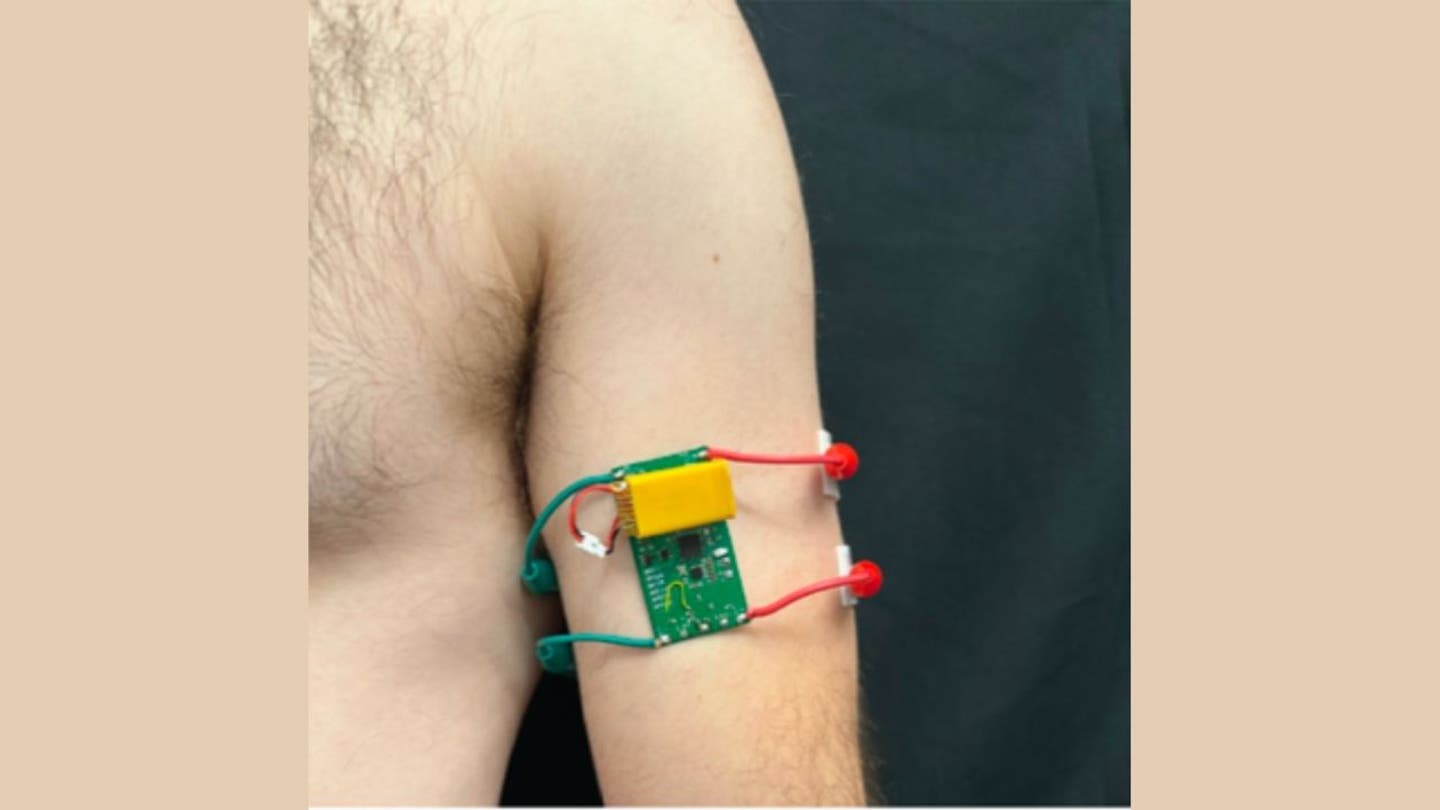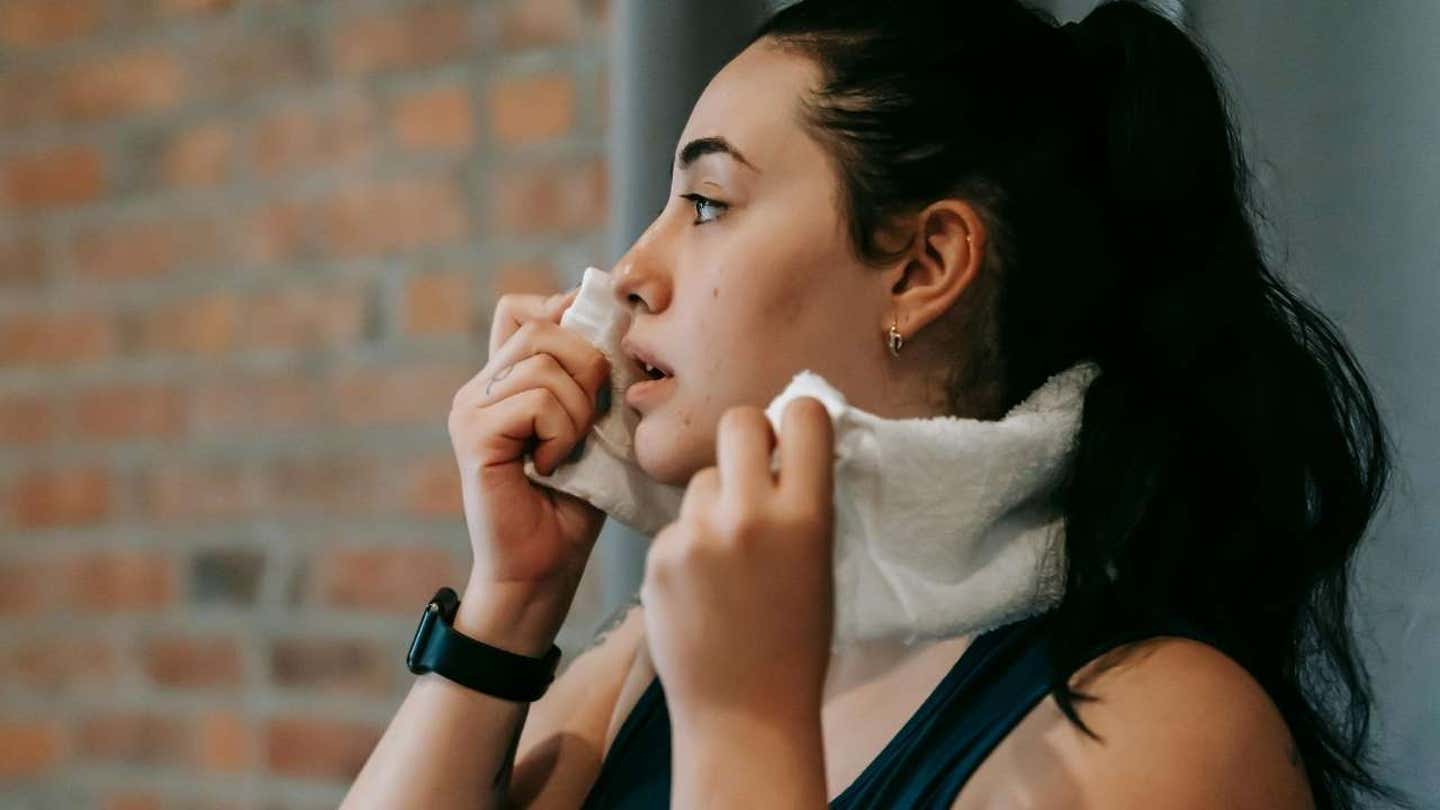NEWYou now have the option to listen to news articles!
Many of us are aware that staying hydrated is crucial, but we often fail to keep track of our water intake. Dehydration can set in without us realizing it, with symptoms such as dizziness, fatigue, or confusion. By the time you feel thirsty, it may already be too late. This is where the new wearable hydration sensor comes into play. Instead of relying on guesswork, this device provides real-time data, enabling you to proactively maintain proper hydration levels.
Single-side electrode configuration setup using hydration bioimpedance sensor. (University of Texas at Austin)
How the wearable hydration sensor functions
Developed by researchers at the University of Texas at Austin, this sensor is designed to detect early signs of dehydration through a method known as bioimpedance. By passing a small, painless electrical current through your bicep and measuring how easily it flows through your tissue, the sensor can determine your hydration levels. Hydrated tissue allows the current to pass smoothly, while dehydrated tissue resists it, which the sensor can detect. The sensor connects wirelessly to a smartphone app, providing immediate feedback on your hydration status without the need to wait for lab results.
Benefits of the wearable hydration sensor for various activities and health
Aside from being a cool piece of technology, this sensor has practical applications. Athletes working out in the heat can use it to prevent fatigue or cramps. Firefighters and police officers wearing heavy gear in hot conditions can stay safe on the job with this device. Even office workers who tend to forget to drink water during long meetings can benefit from timely reminders about their hydration levels. The researchers believe that this wearable hydration sensor could also play a significant role in healthcare, especially for patients with kidney or cardiovascular issues who need to monitor their hydration closely.

Rigid PCB and commercial gel electrode system. (University of Texas at Austin)
The science behind the hydration sensor
To validate the effectiveness of the sensor, the research team conducted controlled experiments where participants took a diuretic to induce fluid loss. The sensor tracked hydration levels, which were then compared to urine samples for confirmation. The sensor’s data closely matched the chemical markers in the samples, demonstrating its accuracy and reliability even during daily activities like walking or working.

A woman sweating during a workout. (Kurt “CyberGuy” Knutsson)
Implications for the general public
Monitoring your hydration levels just got easier with the wearable hydration sensor. This device provides real-time updates on your hydration status, ensuring that you are always aware of any potential dehydration issues. While the technology is still in development, it holds promise for becoming an essential tool in daily life, helping individuals maintain optimal hydration levels for improved health and performance.
Key takeaways from Kurt
The wearable hydration sensor empowers individuals to take control of their health by monitoring their hydration levels accurately and conveniently. Whether you are an athlete training for an event or simply trying to stay focused at work, having real-time information on your hydration status can make a significant difference in your overall well-being.
Are you willing to rely on a wearable sensor to alert you to hydrate, or do you believe that thirst is still the best indicator? Share your thoughts with us at Cyberguy.com/Contact.
Kurt “CyberGuy” Knutsson, an award-winning tech journalist, shares his passion for technology and gadgets that enhance life with contributions to various news outlets. For tech queries or story ideas, visit CyberGuy.com.





